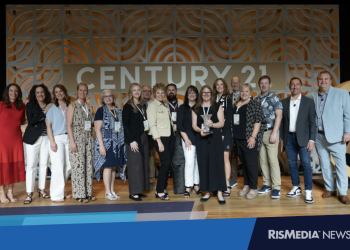Our HomeServices family of companies honored the tradition of MLK Day of Service with a wide variety of company events. So, in the spirit of leaders who give back, I want to dedicate this post to a Black leader whose contributions changed our country, our world and really, our entire universe: Katherine Johnson.
Johnson lived an extraordinary life. She was born in White Sulphur Springs, West Virginia in 1918 and immediately it was clear she had a penchant for–and brilliance with–numbers. By age 13, Johnson was already attending high school classes. At age 18, she enrolled at West Virginia State College, where she excelled in mathematics and was mentored by math professor W.W. Schieffelin Claytor, the third Black American to earn a PhD in mathematics. In 1937, she graduated West Virginia State College with the highest honors and began working at a teaching job at a Black public school in Virginia.
In 1939, when West Virginia quietly integrated its graduate schools, West Virginia State president Dr. John W. Davis chose Johnson and two other men to be the first Black students at the state’s flagship graduate school, West Virginia University. Johnson left her job teaching and enrolled in the program, though she left the program shortly after the first session to start a family. When her children were older, Johnson returned once again to teaching.
Several years later, in 1952, a relative told Johnson about a few open positions at the all-Black West Area Computing section at the Langley laboratory at the National Advisory Committee for Aeronautics (NACA). Johnson moved with her family to Newport News, Virginia and started working at Langley in the summer of 1953.
For the next four years, she analyzed fight data and plane crashes, and in 1958, her mathematics work was used in “Notes on Space Technology,” a series of lectures by engineers in the Flight Research Division and the Pilotless Aircraft Research Division (PARD) who would become the Space Task Group, NACA’s first official exploration into the possibilities of space travel. Later that year, when NACA turned over operations to NASA, Johnson, according to NASA “came along with the program.” The year prior, she co-authored a report along with engineer Ted Skopinski–“Determination of Azimuth Angle at Burnout for Placing a Satellite Over a Selected Earth Position”–and this credit marked the first time a woman in the Flight Research Division was named on a research report.
Her work on NASA’s Mercury program (1961-1963) was perhaps what she’s most well-known for today. In 1961, Johnson’s calculations of the path from Freedom 7 sent the first U.S. astronaut–Alan B. Shepard, Jr.–into space. In 1962, Johnson began work on an orbital flight for astronaut John Glenn that required the building of a complex communications network around the globe.
Despite the intense work to create this network, astronauts were hesitant to trust their lives to electronics. “Get the girl,” Glenn told his engineers, during the preflight checklist.
“The girl,” of course, was the brilliant Johnson, who ran the same equations that were programmed into the computer all by hand, using a desktop mechanical calculating machine.
Johnson would later recall Glenn saying, “If she says they’re good, then I’m ready to go.”
On February 20, 1962, Glenn became the first American to orbit Earth. The mission, thanks to Johnson, was a success, and marked the beginning of NASA’s accomplishments in human spaceflight.
So, what’s the message? During Johnson’s 33 years spent at Langley, she co-authored 26 research reports and among many, many achievements, was part of the team that made calculations about when to launch the rocket for the 1969 Apollo 11 mission that sent the first three men to the moon. She also worked on the space shuttle program. In 2015, at age 97, President Barack Obama awarded her with the prestigious Presidential Medal of Freedom, though sadly in February 2020 Johnson passed away at the age of 101. When once asked about her time at Langley, Johnson said, “I loved going to work every single day,” proving that when you love something that much, you can achieve goals that are out of this world.
This article is adapted from Blefari’s weekly, company-wide “Thoughts on Leadership” column from HomeServices of America.












